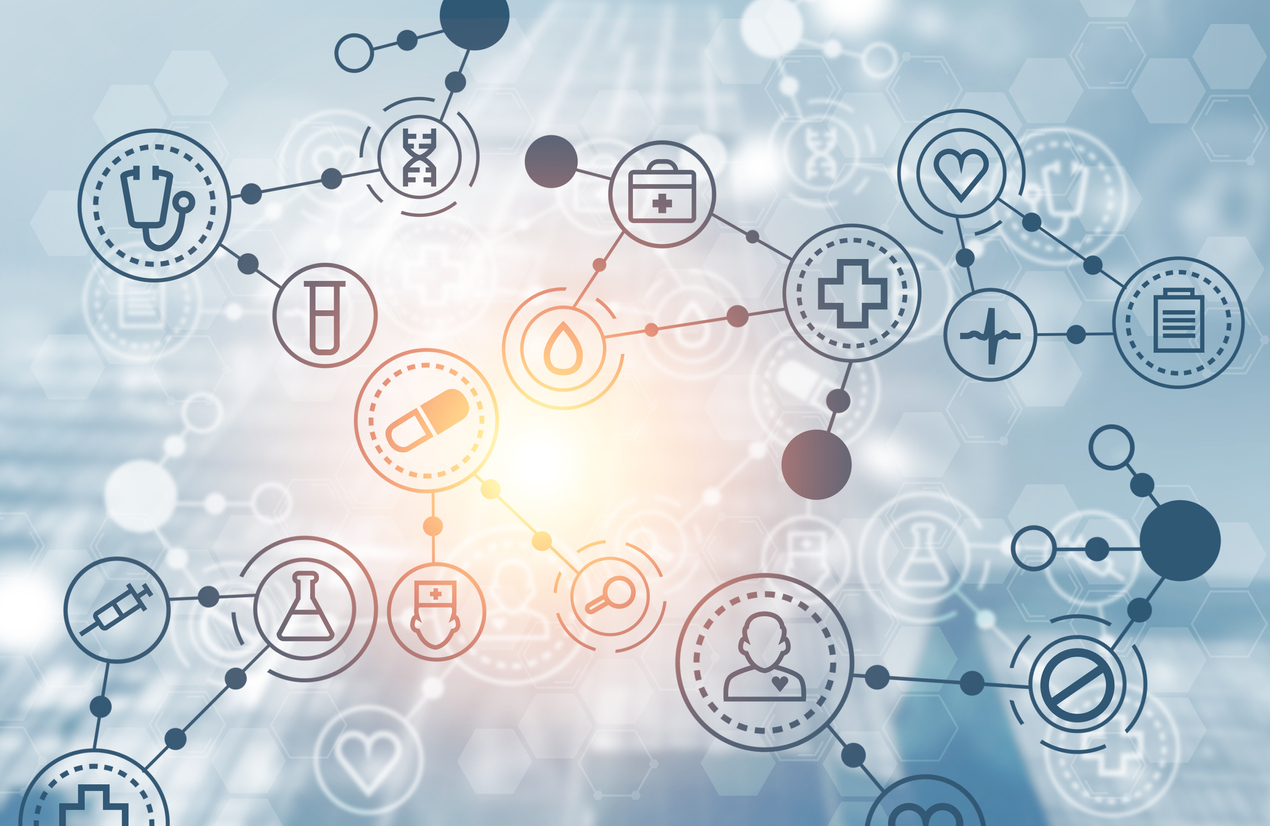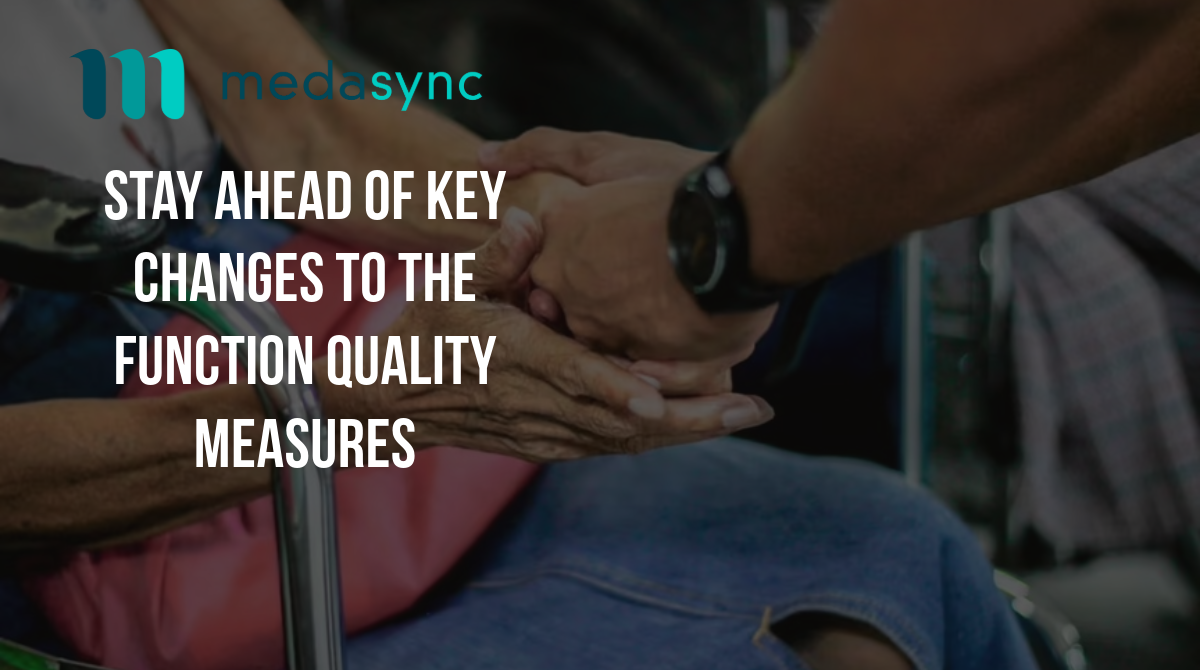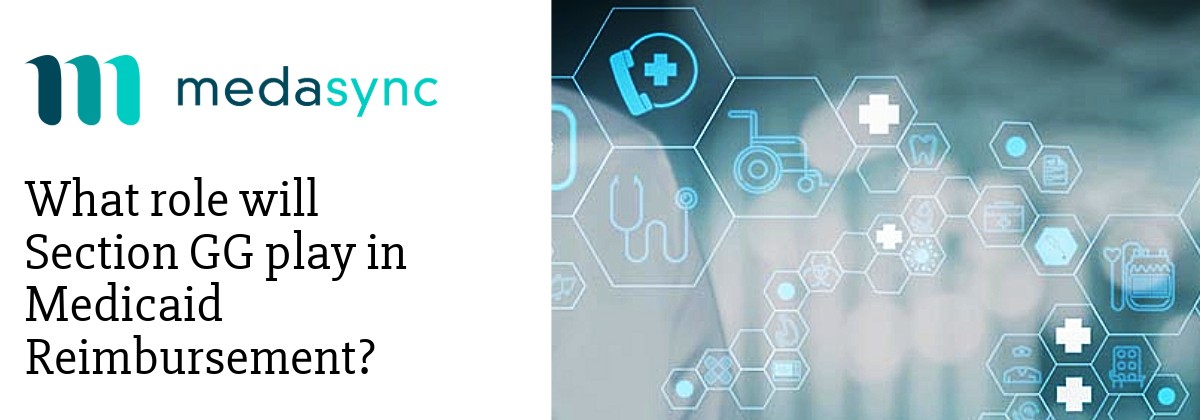The Role of AI in Healthcare
Welcome to the first post in a series on AI in healthcare. Over the next few posts, we’ll explore the background of artificial intelligence in healthcare, its implications for post-acute care, impact on the revenue cycle, and finally our philosophy on artificial intelligence. Be sure to sign up for our newsletter so you will be notified about new content.
Where AI in Healthcare is Headed
Across the country, AI in healthcare is becoming a greater focus for a number of parties. Hospitals are using it to get a better understanding of patient conditions, diagnoses, and record management. Numerous startups are appearing with new AI solutions designed to fill gaps and streamline operations. Pharmaceutical companies are leveraging AI to better understand potential prescription needs.
According to a recent survey from OptiumIQ, more than 60% of healthcare industry leaders are making AI a greater focus in their efforts. Most of their investment in AI is expected to go toward improving administrative processes, with 50% of organizations investing first in business process automation to handle administrative and customer service tasks. One-third will invest in personalizing clinical care recommendations such as drug therapies, while another third will invest in identifying new therapeutic and clinical discoveries at a faster pace.
In addition to administrative needs, healthcare leaders are also utilizing AI to address a number of operational challenges. These include automating prior authorizations (51%); providing individuals with relevant health decisions through personalized communications (47%); managing electronic health records (45%); revealing abuse, fraud, or waste in reimbursements (43%); and choosing appropriate care settings (38%).
But what about the data being collected through AI and elsewhere? Current estimates suggest that the amount of data healthcare amasses doubles every three years, and by 2020 it is projected to double every 73 days. This data is found in a variety of forms captured throughout the care cycle, such as medical history, progress notes, imaging, and laboratory narratives. With this mass amount of data, what’s shocking is that 80% is captured in unstructured formats, primarily free-text.
However, all of this data isn’t just tied up in EHR records scattered throughout the vast healthcare network — it’s also in consumer devices. Apple’s health monitoring tools are putting electronic health records into the hands of consumers, who are generating a wealth of medical data for medical researchers to learn from and even predict potential problems. This data was recently made available to developers to begin building additional solutions.
Technology Trends to Watch
AI in healthcare offers a number of advantages over traditional analytics and clinical decision-making techniques. Learning algorithms can become more precise and accurate as they interact with and learn from mass amounts of training data. The power of AI is about using technology to do the things that it can do better than humans and freeing up people’s time to use the judgment for things computers can’t do well.
There is often a misconception that these types of new tech will “replace” many of the human filled roles we have in place today. However, healthcare in general and specifically the PAC industry has been and will remain a people and relationship-based profession regardless of tech advances. Looking at other industries that have adopted AI, organizations that strategically introduce AI into their processes will find it can allow their team to focus on their core competency (resident-focused care in our case) and automate/eliminate many of the manual/inefficient tasks to drive better results.
When it comes to AI, there are many different approaches and numerous cutting-edge advancements over the years that have made it easier for both end-users and developers to extract the value from AI tools. Here are a few of the basics that are becoming more and more common in both Healthcare and Post Acute Care.
1. Clinical Decision Support
Clinical decision support (CDS) tools are designed to help sift through enormous amounts of digital data to suggest next steps for treatments, alert providers to available information they may not have seen, or catch potential problems such as dangerous medication interactions. These systems are often integrated into the EHR to streamline workflows and take advantage of existing data sets.
Through machine learning (ML), artificial intelligence in healthcare can learn a lot — but unless a clinician or other employee acts on that data, it’s not going to hold value. However, it can be difficult for clinicians to know what to do next, especially when that step might not be immediately apparent. Leveraging AI for clinical decision support, risk scoring, and early alerting is one of the most promising areas of development harnessing data and ML.
By powering a new generation of tools and systems that make clinicians more aware of nuances, more efficient when delivering care, and more likely to get ahead of developing problems, AI will usher in a new era of clinical quality and exciting patient care breakthroughs.
2. Risk Scoring and Stratification
At its fundamental level, a risk score is a standardized metric for the likelihood that an individual will experience a particular outcome. This is a big-data, population-health approach. Healthcare organizations can develop risk scores by examining large cohorts of patients with similar characteristics, extracting key clinical and lifestyle indicators from those cases, and using algorithms to chart how those factors influence ultimate outcomes.
They can then compare other patients exhibiting similar clinical patterns to the validated historical data, which may help predict what will happen in the future. In post-acute care, these future outcomes can include the likelihood of readmission, a fall, or the development of a certain clinical state.
3. Prediction Models
Unsurprisingly, the pace of research into ML prediction and prevention models exceeds that of similar research without ML. Of the many SaaS and tech startups exploring this space, 54 percent are involved in predictive medicine and were founded in 2010 or later. While these models may sound similar, they are actually quite different.
Prevention-based AI analyzes a resident’s medical condition and identifies and calculates the potential for future issues as well as recommends wellness improvements. Prediction-based AI analyzes a variety of data beyond the resident level and provides SNFs with insights into prevention as well as business-level opportunities, such as cost reduction.
4. Natural Language Processing
Natural language processing is the overarching term used to describe the process of using computer algorithms to identify key elements in everyday language and extract meaning from unstructured spoken or written input. NLP is a discipline of computer science that requires skills in artificial intelligence, computational linguistics, and other machine learning disciplines.
The most common use of NLP is centered on providing data to users by identifying and extracting key details from enormously large bodies of information, like superhuman speed readers with nearly limitless memory capacity. Specific tasks for NLP systems include:
- Summarizing lengthy blocks of narrative text, such as a clinical note, by identifying key concepts or phrases present in the source material
- Mapping data elements present in unstructured text to structured fields in an electronic health record in order to improve clinical data integrity
- Engaging in optical character recognition (OCR) to turn images, like PDF documents or scans of care summaries and imaging reports, into text files that can then be parsed and analyzed
- Conducting speech recognition to allow users to dictate clinical notes or other information that can then be turned into text
5. Robotic Process Automation
Robotic process automation (RPA) refers to replacing human processes and inputs with the work of artificially intelligent “robot” employees. Need lab results entered into a patient’s medical chart? Create an RPA task to grab the information from the lab’s system to automatically input it into the medical record and sync that data across various locations in your organization. RPA eliminates human errors when inputting data into medical charts so you can ensure accuracy, which is of the highest importance when lives are on the line.
For post-acute care operators, RPA will be a major benefit not only for its ability to seamlessly move data throughout the organization (typically an administrative burden left to clinicians and other support staff) but also for the overarching need to get patient data where it needs to be to achieve certain aims. For example, consider the initial assessment period.
While the assessment period is 8 days, that’s not a lot of time to receive a new patient and dig into their medical background to see what you’ll need to be billing for. Much of that work has to be completed manually, too. With RPA, your facility would be able to prioritize clinician time on treatment and other important tasks as opposed to data collection and entry (multiplied of course by each new patient across the number of facilities in the organization).
MedaSync is Leading the AI Charge for Post-Acute Operators
Despite the number of advancements being made, AI in healthcare is still in its early development stages, but the industry as a whole is moving forward. At MedaSync, we’re hard at work building out and refining our advanced AI solutions to support improvements to your workflow and revenue cycle.
Our goal? To deliver simple, purpose-built software solutions to keep nurses away from fax machines and forms and in front of patients and ensure excellent operators are paid adequately for great care so they can further empower and financially support their amazing teams.
Want to see how it works? Sign up for a demo here.





